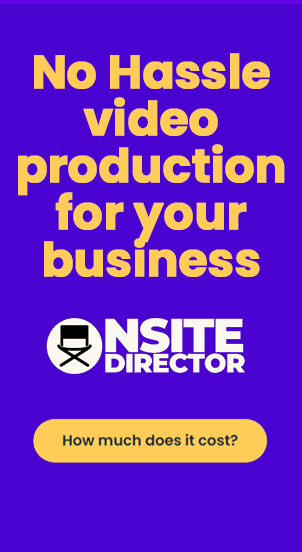Becoming a freelance video editor is a very exciting and interesting profession, especially if you’re looking solely to be remote. You get to work with clients from all over the world, and basically – sky’s the limit for job opportunities and career advances. One of the biggest advantages in the freelance world, is that you’re your own boss and nobody can take that away. But, how can you become a successful freelance video editor? This guide will show you how.
Before you start
- Study and practice. As a video editor, you need to continuously hone your video editing skills to remain competitive. There are a lot of freelance video editors out there, and you need to be able to match up with their skill sets and capabilities in order to be competitive.
- Discover your style and your own unique point of view. Editing is a craft entirely on its own, and you need to be able to find your own style, similar to a writer finding his unique “voice”. Another way to think of it is finding your own brand of editing. Clients like video editors who have a point of view, and not just someone who cuts and splices as needed.
- Build your very own portfolio. Clients want to know what they’re paying for, and being able to see a portfolio gives them a preview of what to expect from a video editor. One of the very first things you should put together before you start even offering your video editing services is to develop a solid demo reel. Think of it as your video resume, and make sure it gives a good first impression!
- Keep up-to-date with the latest trends in video editing. Constantly be on the lookout for the latest video editing techniques, what’s popular, and what’s so last year.
- Price your services. This is a little tricky to do but very crucial. There’s no official industry standard, but data from Indeed claim a video editor in the United States earns a little over $20 an hour.
Equipment needed
Being a freelance video editor doesn’t mean that you have to buy an entire studio worth thousands of dollars of equipment and work alone from home. But you’re going to need a couple of things. Basically, a powerful PC or laptop is a must, with lots of storage units and editing software – depending on the work you do. Note that many video editors are using dual or even triple monitor setup to extend their workspace. Besides that, it’s nice to have high quality speakers and a set of good headphones – but this isn’t as important as the software and hardware on your machine.
Here are the things you should aim for:
- Enough CPU and RAM capability to handle complex timelines without crashing
- Enough CPU or GPU rendering capability to export videos in a reasonable amount of time
- Plenty of hard drive space or cloud storage to safely store client footage and projects
- Enough hard drive space or cloud storage to archive old client projects just in case future edits are needed
- Video editing software – here are 21 of the best (and free) out there
Finding work
Now, let’s assume you’re ready to start working. Where can you find freelance video editor jobs? Here are three types of workspace environments:
Specialized freelance video editing job boards
Let’s find out what is the main difference between these four types and which one should you go for.
If you decide to register as a freelance video editor at Valoso for example, the advantage is that you’re working on a platform that exclusively offers video editing services to clients. This gives you the chance to be a part of community that’s all about video editing and full with professionals. And, it is a great place to make more money – especially if you’re somewhat experienced video editor.
It’s not just a place to showcase your work. Behance actually has job boards where you can find great opportunities for freelance editing jobs. Behance also is an Adobe Creative company who can help you with free resources for you to try. From graphics, to photo editing to video editing and more! Try out their Premiere Rush CC that helps you shoot, edit and share online videos.
Remote-only freelance job boards
These are job boards that only feature job listings from remote companies. Because of this, they are highly competitive.
To win interviews using remote-only job boards, do this:
- Only apply to jobs you’re highly qualified for.
- Create a custom cover letter using a cover letter template like this.
- Sign up for email alerts (if available) and apply early.
- Use a resume that is optimized and highly relevant to the position you’re applying for.
Competition: High
Amount of Listings: High
Email Alerts: Yes (Daily)
We Work Remotely is one of the original and most popular remote job boards.
Competition: Medium
Amount of Listings: Low
Email Alerts: Yes (Weekly)
Remotive is not as popular as We Work Remotely but it’s competitive enough to warrant the creation of a short, custom cover letter for jobs you apply to. One thing that’s original about Remotive is that it clearly lists the skills that are required from job applicants to be considered for the remote position.
Competition: Medium
Amount of Listings: High
Email Alerts: No
FlexJobs is the only remote-only job board that makes you pay to view full job listings. However, there’s a reason for this. According to their website they “screen the jobs so you only get an ad-free, junk-free job search for high-quality remote and flexible jobs.” They also have a handy advanced filtering system that lets you create ultra-specific job searches.
For only about $7/week or $15/month it’s worth checking out if you run dry on opportunities.
Competition: High
Amount of Listings: Medium
Email Alerts: Yes (Daily)
Remote.co has a similar layout as FlexJobs but the main difference is that it’s free. Because of this, competition for many of the remote jobs posted here are high. It is one of the most popular remote-only job boards after We Work Remotely.
Competition: Medium
Amount of Listings: Medium
Email Alerts: Yes (Daily)
This job board is less popular than We Work Remotely and FlexJobs but it combines the approach of each of these job boards. Like We Work Remotely, it lists remote jobs posted on the site by hiring managers. And like FlexJobs the team at Dynamite Jobs searches the web for the best remote jobs. The difference between this remote job board and FlexJobs is that this one is free!
Quick-apply job boards
Quick-apply job boards let you create a profile so you can apply to jobs without leaving the job board. Usually you can apply to jobs in one or two clicks.
To win interviews using quick-apply job boards, do this:
- Apply to absolutely every job that seems somewhat relevant and interesting.
- Quickly fill in this this cover letter template and download a version as a PDF for each job you apply to.
- Only add jobs to your tracking sheet when you get a positive reply from a hiring manager.
- Complete your profile on each platform and make your profile content succinct like your resume.
- Save jobs you’re highly qualified for and deeply interested in. Apply to them later using this cover letter template if a cover letter is required.
Competition: Medium
Amount of Listings: High
Email Alerts: Yes (Occasional)
AngelList is the job board that provides me with the most interviews time and time again. Most jobs on AngelList are posted by tech startups. To find startups that are well-funded and can pay you your desired salary (and equity), use AngelList’s advanced filtering options. Among all of the quick-apply remote job boards, AngelList has the best filtering system.
Competition: Medium
Amount of Listings: High
Email Alerts: Yes (Daily or Weekly)
The nice thing about Indeed is that, after applying to one job, it copies your cover letter template over to future jobs you apply to. You just have to change the name of the company and position you’re applying for in the cover letter template. Indeed also has a really slick smartphone app. To search for remote job on Indeed, enter “Remote” in the location field.
Competition: High
Amount of Listings: High
Email Alerts: Yes (Occasional)
Competition seems to be higher on LinkedIn compared to AngelList and Indeed. I think this is because it’s a social media platform as well as a jobs platform. I haven’t had much luck with LinkedIn in my most recent remote job search but it’s still a good platform to use. Because you can apply to dozens of remote jobs in only 20 minutes you really have nothing to lose.
Competition: Medium
Amount of Listings: Medium
Email Alerts: Yes (Occasional)
The only problem with ZipRecruiter is that it doesn’t let you put “Remote” as a location. To work around this you have to add the word “remote” after your desired job title and leave the location field blank. Other than this, ZipRecruiter is a good way to build momentum fast. It has a one-click apply feature that is literally only one click. It only takes a second to apply to a lot of remote positions.
Major job boards (with remote filtering)
When you run low on opportunities using remote-only job boards and quick-apply job boards you can resort to more traditional job boards, or what I refer to as major job boards. These are job boards that “scrape” the web for open remote jobs. When you click on a job listing the job board will redirect you to the application page hosted on the hiring company’s website.
To win interviews using major job boards, do this:
- Create and optimize a one-page, two-column resume
- Always add a cover letter, even if it is optional.
- Use a generic cover letter or custom cover letter template depending on your level of interest.
- Don’t waste time applying to jobs that require you to recreate your resume on their site.
Competition: Medium
Amount of Listings: High
Email Alerts: Yes (Occasional)
Google’s job search feature can give you access to remote job openings that are not posted on any other job boards. To only see remote job listings, click the Location tab, then click the Work from home button. At this time I only recommend using Google’s Job Search platform as a major job board because it’s powered by Google (the most popular search company) and because the platform allows you to filter to only see remote jobs.
Insider tips at becoming successful
- Follow up with people you contact – get them interested in what you do and keep them abreast to recent developments
- Wherever you register – fully complete your profile
- Create a portfolio of work examples that illustrate your video editing skills
- Write detailed and engaging job proposals
- Communication with your clients is the key
- Don’t be afraid to ask your client tons of questions
- Be flexible on jobs you take at the beginning
- Work fast and meet deadlines!
- Make sure you have enough storage, and always backup your data
- As you gain experience and skills, raise your rates (because no one else is going to.)
Bonus: Find hidden video editing jobs
When a company creates a new remote job listing it’s usually added to a section of their website that’s powered by an applicant tracking system (ATS), also known as an ATS subdomain. Some examples of popular ATS’s include Lever, Greenhouse, and Hire With Google. Their corresponding subdomains are
jobs.lever.co
boards.greenhouse.io
hire.withgoogle.com
jobs.jobvite.com
*.workable.com
*.breezy.hr
*.applytojob.com
*.recruitee.com
After a new remote job listing is posted by a company on one of these subdomains it’s not always added to job boards by the company. That means that these jobs listings are virtually hidden to the public web, which is good news for you. It means you can be one of the first people to apply.
To find these jobs, go to Google and use this search template: site:[ats url] remote. Replace the [ats url] placeholder with the subdomain of the ATS site and replace the placeholder with your desired job title or area of specialty. If I wanted to look at all the companies using Lever’s ATS that had remote content marketing positions available I would enter the following into the Google search bar:
site:jobs.lever.co freelance video editor remote
Try it out for yourself using your job title or related keywords. What happens? I think you’ll find the results interesting.






